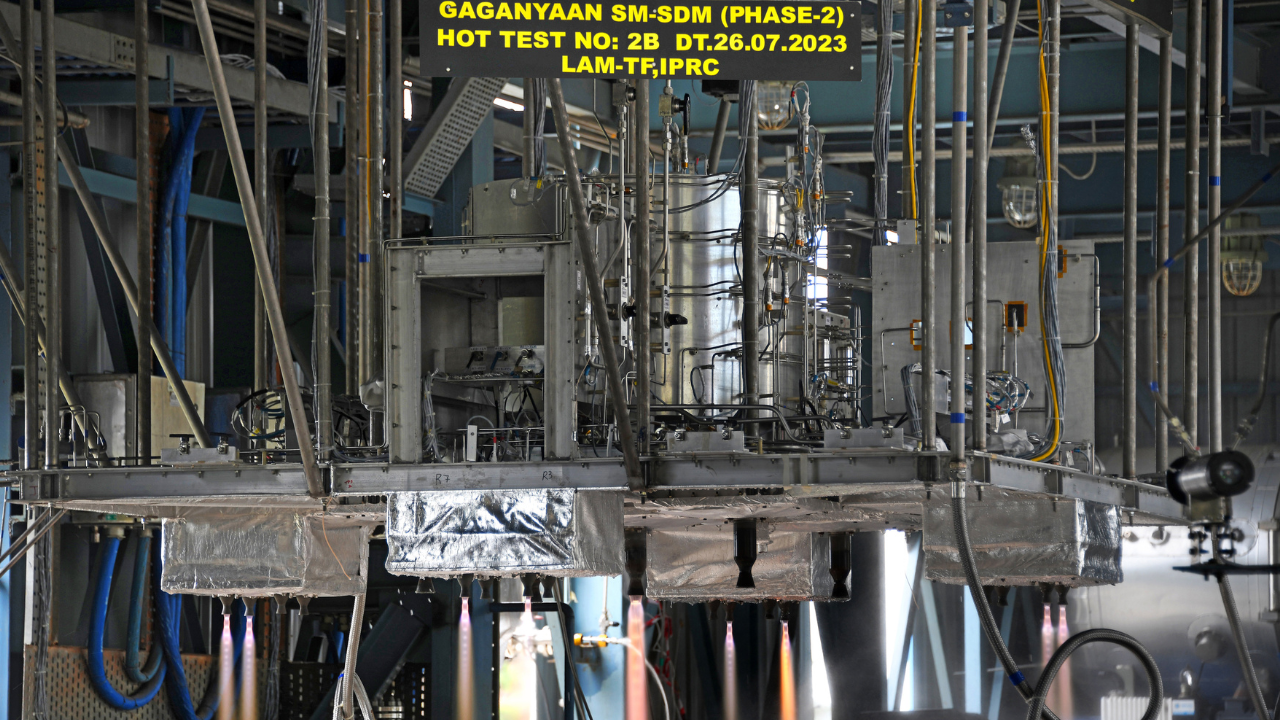[ad_1]
The SMPS — designed and developed by the Liquid Propulsion System Centre (LPSC), which has facilities in Bengaluru and Valiamala (Thiruvananthapuram) — is the propulsion system powering the service module (SM), which will help the spacecraft carrying astronauts in performing orbit injection, control, de-boosting and abort if required.
“These tests marked the second and third hot tests in the SM–System Demonstration Model (SM-SDM) phase 2 test series. The first hot test was conducted on July 19. During Wednesday’s tests thrusters were operated in both continuous and pulse mode, in sync with the mission profile,” Isro said.
Continuous mode testing means the thrusters are fired continuously for a predetermined time. This is to test the endurance of the thruster/engine. In pulse mode, the thruster is turned on for a while and then turned off again. This cycle is done to understand, among other things, how much turnaround time is needed.
The initial hot test which lasted for 723.6 seconds focussed on demonstrating orbital module — the module that will carry the crew module (accommodating the astronauts) and the service module (which will help astronauts in crew module to survive) together — injection and the calibration burn of 100 N thrusters and Liquid Apogee Motor (LAM) engines
“The calibration burn was essential to identify and isolate any non-operational engines. The LAM engines and reaction control system (RCS) thrusters performed as expected. The latter hot test, with a duration of 350 seconds, aimed to demonstrate the circularisation of the orbital module to achieve the final orbit. During this test, LAM engines operated in continuous mode, while RCS thrusters fired in pulse mode,” Isro said.
The space agency said it has three more hot tests scheduled to demonstrate de-boosting requirements and off-nominal mission scenarios. “These tests will further validate and refine the performance of the propulsion system, ensuring its readiness for the upcoming Gaganyaan mission,” it added.
[ad_2]
Source link

